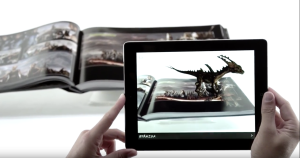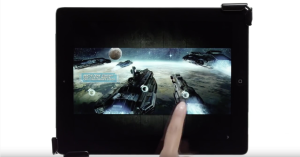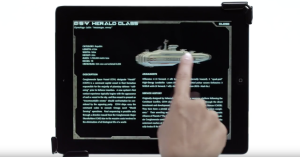Peter Lobner
Pop-up books and cards have existed for a very long time, becoming popular in Europe in the late 1800s and in the U.S. in the early 1900s.
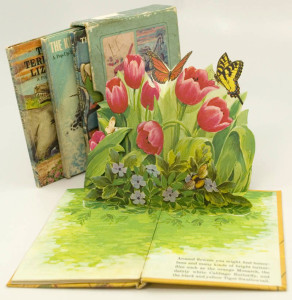 Source: The Harold M. Goralnick Pop-up Book Collection
Source: The Harold M. Goralnick Pop-up Book Collection
You can get a good overview on the history and applications of physical pop-ups at the following Bowdoin College link:
http://www.bowdoin.edu/news/archives/1bowdoincampus/008200.shtml
At the above website, you’ll find a link to a short Vimeo video on the 2011 Bowdoin College exhibition: Pop-ups! They’re not JUST for Kids, which you also can access directly at the following link:
At Comic-Con 2016 in San Diego, I was introduced to a remarkable digital, virtual pop-up technology in the form of the large-scale, hard cover graphic novel ANOMALY.
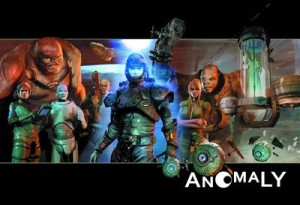 Source: Anomaly Productions Inc.
Source: Anomaly Productions Inc.
The creators of ANOMALY explain:
“ANOMALY is the longest full-color original graphic novel ever created, but that’s not all. It’s also enhanced with state-of-the-art AUGMENTED REALITY technology. Simply point your smartphone or tablet at pages in the book and watch characters come to life with 3D ANIMATION and interactivity!”
A stand-alone free app is needed on your mobile device to bring the selected pages of ANOMALY to life. Hidden AR cues on the printed pages are used to activate the corresponding AR feature in the app. When first published in 2012, there were 50 AR pages in the 370 pages of ANOMALY; now there are 60 AR pages. The capability exists to add AR features via software updates after the physical book has been published.
You can get a sense for what AR brings to a printed document in the following short ANOMALY commercial trailer:
https://www.youtube.com/watch?v=jU0TzccuAGE
Below are three screenshots from that video to illustrate basic capabilities:
The virtual pop-up feature enables the reader to visualize a 3D interactive model that is animated and can include audio.
Touch features on the virtual page can be used to bring up more detailed written information and animations related to the selected object. This is a drill-down capability that links to information not included on the printed page.
I think you’ll also enjoy the following video demonstration by the co-founder of ANOMALY, Brian Haberlin:
https://www.youtube.com/watch?v=jU0TzccuAGE
In the above video, you’ll see that this AR technology also can be implemented on small printed items like a postcard.
Below are a few screenshots I took using my copy of the book and the book app. With an iPhone, it was easy to view the complete 3-D model of the spaceship shown below, which was flying through an animated star field. The 3D model has a relatively high level of detail, so you can move in with your mobile device to see small features on the spaceship. Mirror your mobile device to a large screen TV for a really impressive view of the virtual pop-ups.
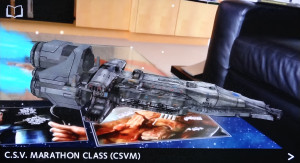
 Some objects shown in less detail in the book can be viewed as much more detailed, animated 3-D virtual objects, as shown below:
Some objects shown in less detail in the book can be viewed as much more detailed, animated 3-D virtual objects, as shown below: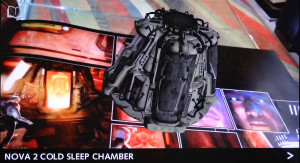 People and creatures come to life as animated 3-D models standing on the page. The creature below growled and reacted when touched, but it didn’t bite.
People and creatures come to life as animated 3-D models standing on the page. The creature below growled and reacted when touched, but it didn’t bite.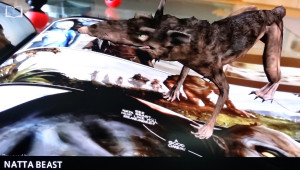
ANOMALY, which was published in 2012, isn’t the first application of VR technology to a printed document. However, it is the first to demonstrate this technology on such a grand scale. James Hoare, writing for the SciFiNow website, noted:
“Marvel Comics have been similarly using (AR) to great effect across their Marvel Wow! titles – a whole world of 3D animation and 2D pop-ups, background details and more open up to you – ranging from the gimmicky, to the genuinely enriching, as critters scuttle across the page, and dossiers on planets and people make themselves available.”
Now imagine the potential applications of this AR technology in science, technology, engineering and math (STEM) courses. Given the challenge of attracting young people to these disciplines, modern AR interactive texts and postcard-size flash cards should be able to deliver an engaging environment for both the teacher and the student. Mirroring the teacher’s mobile device to a large flat panel display is a simple means to engage even a large classroom full of students.
If you were teaching a STEM class, what do you think would be a good application of this AR technology for that class (Hint: The answer does not involve sitting in the back of the classroom reading ANOMALY with your own mobile device).
